Whether it’s cruising down the street or attempting a kickflip, there’s something about the rush of wind and the feeling of freedom that makes skateboarding irresistible. If you’re a parent, you’re probably wondering how to introduce your child to the world of skateboarding and teach them the skills they need to ride like a pro.
Whether your child is a complete beginner or has some experience on a skateboard, I’ve got you covered with everything you need to know to help them develop their skills and confidence on the board. So, grab your helmet, lace up your shoes, and let’s go down the road to becoming a skateboarding family!
Choose the Right Skateboard
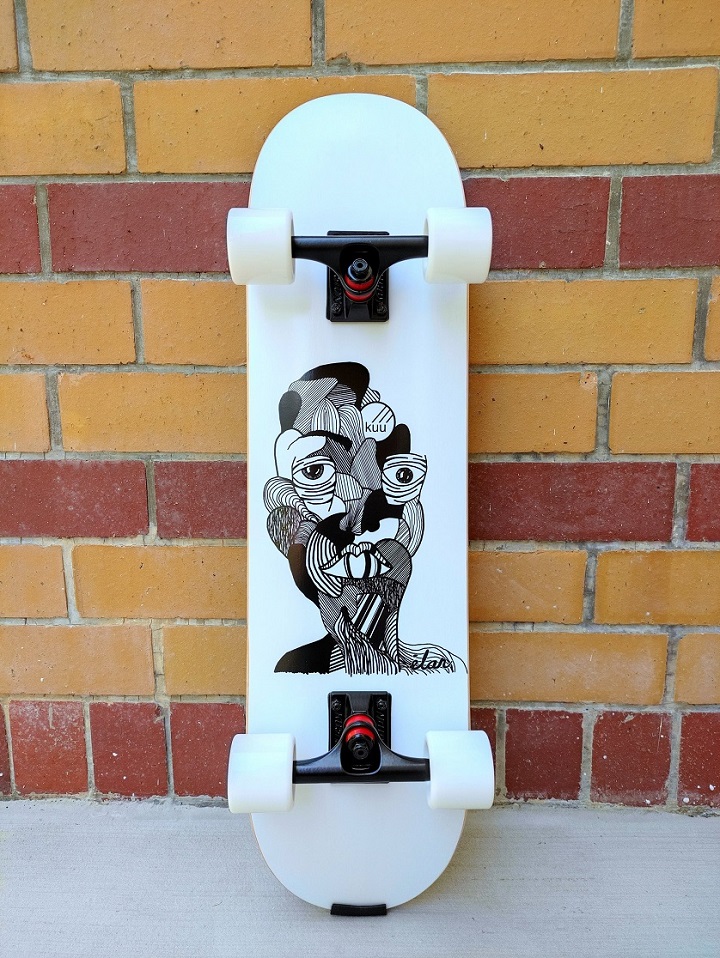
A proper skateboard is not only essential for safety reasons, but it also makes the learning process easier and safer for your child. The first step in choosing the right board for your child is to consider their age, height, and weight. Younger children do better with smaller, lighter boards that are easier to control, while older children and teenagers may prefer larger, more stable ones. You’ll also want to make sure it’s the right size for your child’s feet and that it has the appropriate weight capacity.
Another important factor to consider is their riding style. If they’re just starting out, a skateboard with softer wheels and a more flexible deck will be easier to learn on. On the other hand, if your child has more experience and wants to do tricks or ride in a skatepark, a board with harder wheels and a stiffer deck may be a better choice.
The Importance of Skateboard Safety Gear
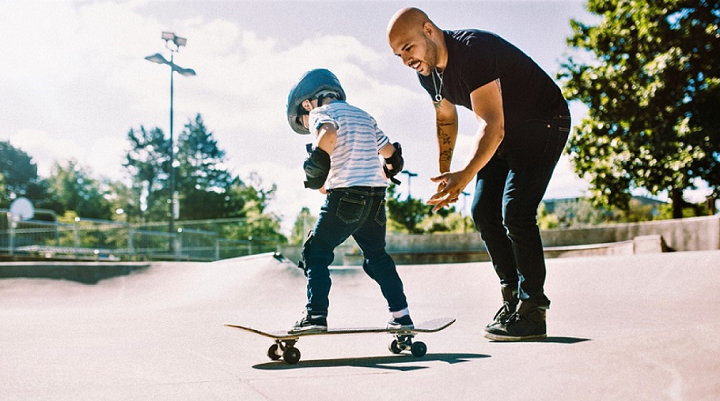
Regardless of your child’s age or skill level, wearing durable skateboard protection equipment can help prevent serious injuries and give them the confidence they need to improve their skills. These items are durable, comfortable, and effective at preventing injuries, so you can trust that your child is as safe as possible.
You can buy individual parts or look for sets that include everything your child needs to stay safe while skateboarding. These sets often include a helmet, knee pads, elbow pads, and wrist guards, so you can have peace of mind knowing your child is out of danger.
Helmet
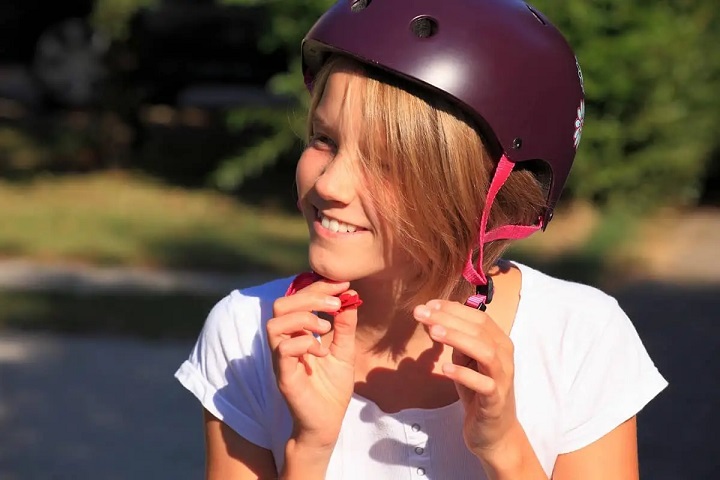
The helmet is one of the most important pieces of skateboard protective gear for a child. Just like with skiing or cycling, it protects your kid’s head in the event of a fall or collision, which can prevent serious injuries such as concussions or brain damage.
When choosing one for your child, make sure it fits properly and is suitable for skateboarding. It should be certified by safety organizations such as ASTM International or the Consumer Product Safety Commission, which ensures that it’s been tested and meets certain safety standards.
Elbow and Knee Pads
When a child falls off their board, they often instinctively put their hands out to break their fall, which can result in injuries to their elbows and wrists. Similarly, their knees take a lot of impact when they fall. Wearing skateboard protection equipment like elbow and knee pads helps cushion the impact of a fall, which can prevent scrapes, bruises, and more serious injuries such as broken bones.
Wrist Guards
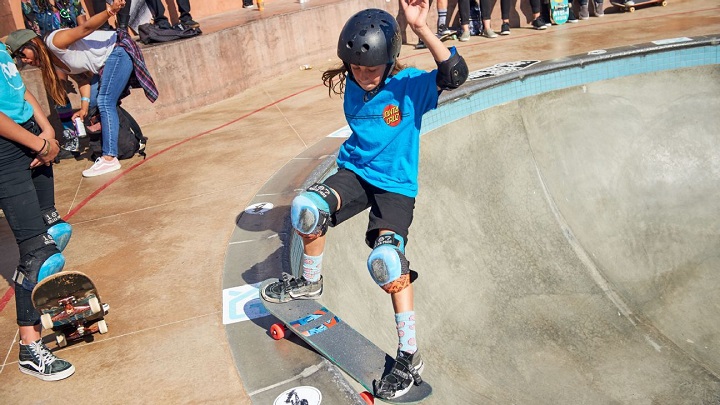
Wrist guards help protect your kid’s wrists from injury by providing extra support and cushioning. This skateboard safety wear can also help prevent fractures and sprains in the wrist, which is painful and takes a long time to heal.
They can give children the confidence they need to practice new tricks and techniques, knowing that their wrists are protected in case of a fall. Look for wrist guards that are made with durable materials and offer ample cushioning, without restricting movement or causing discomfort.
What Is the Right Age to Start Skateboarding?
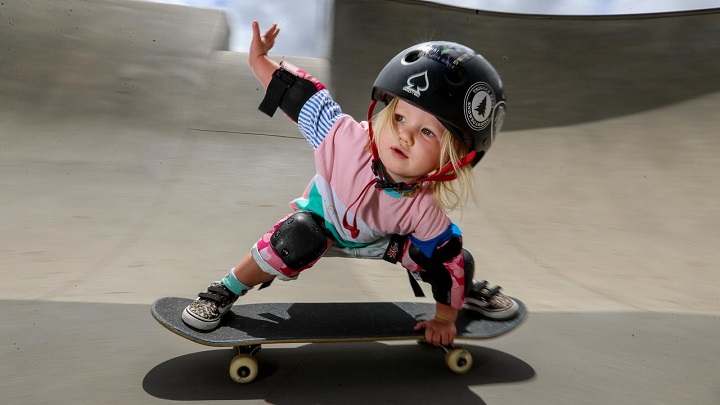
While there’s no one-size-fits-all answer to this question, most children can start skateboarding as early as 5 years old. However, it’s important to remember that every child is different and develops at their own pace. Some are ready to start earlier, while others may need to wait a little longer.
It’s also important to consider your child’s physical ability, coordination, and interest in the sport before deciding if they’re ready to start. Ultimately, it’s up to parents to make an informed decision based on their kid’s individual needs and abilities. By starting at the right age, children will enjoy the fun and excitement of skateboarding while staying safe and comfortable.
Start With the Basics
Skateboarding is a challenging activity, and children easily become frustrated if they try to tackle advanced techniques right away. Begin by teaching your child how to stand on the board and balance properly.
Show them how to position their feet on the board and explain the importance of keeping their weight centred over it. Once they’re comfortable with standing and balancing, move on to basic pushing and turning techniques.
Take It Slow
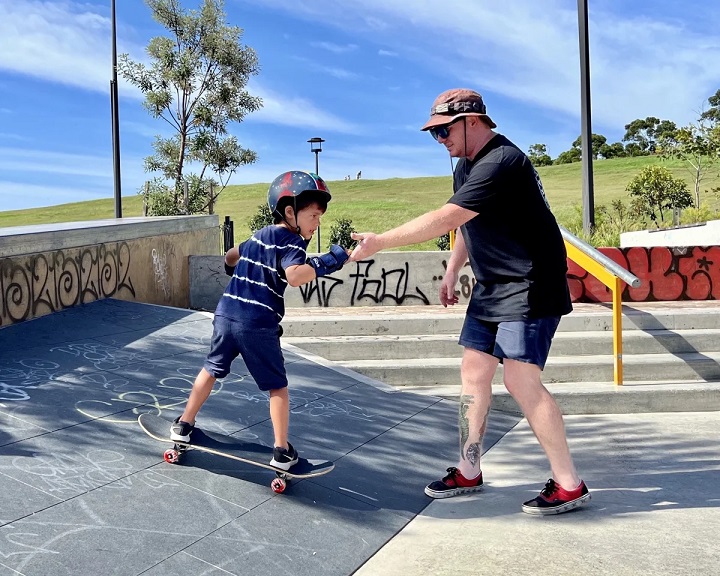
Encourage your kid to practice these techniques in a safe and controlled environment, such as an empty parking lot or a beginner-friendly skatepark. As they gain confidence and skill, gradually introduce more difficult techniques like ollies and kickflips. Offer them guidance and support along the way, and never push them beyond their comfort level.
It’s also important to take breaks and rest when they need to. Skateboarding can be physically demanding, and your child may need time to rest and recover between practice sessions. Don’t expect them to master every technique right away. Encourage them to keep practising and trying and celebrate their successes no matter how small!